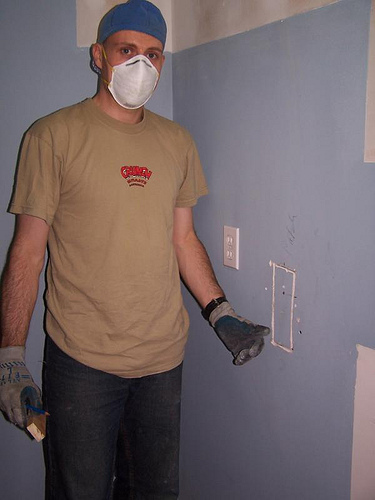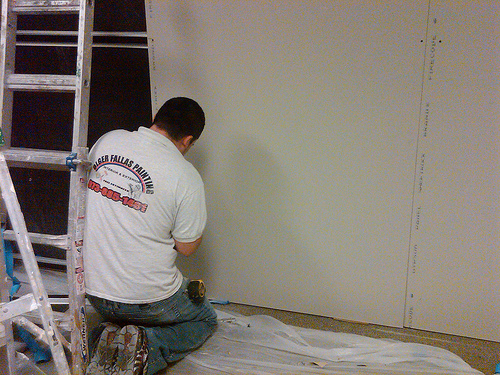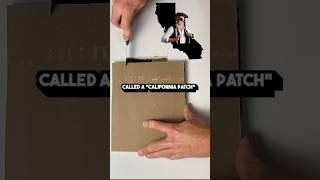[post_name drywall tools Drywall Issues at Home: DIY Fixes Vs Professional Drywall Repair

Should you attempt to diy or hire a drywall specialist? The answer depends on the size and kind of the needed repair. If the job is big and also calls for specialized expertise, equipment and also a substantial investment of your time, you could intend to work with a drywall professional. However, scratches, damages and tiny to tool sized hole fixings can be quickly mastered by also the beginner.Drywall is genuinely one of the best creations ahead along within the last 80 years. And for some really excellent factors; it is an affordable wall covering that increases rapidly. It is neutral and also can be embellished to private taste. The development of drywall saved contractors and property owners hundreds of bucks in construction costs and also repairs.Drywall, or plaster board, is made from a brittle fire immune material that is wrapped in a thick paper layer. It is really sturdy and could be conveniently reduced, sawed, pierced, bent, toenailed, glued, screwed, paintinged on and also papered over. It also helps to seem evidence as well as protect an area. But also as sturdy as it is, at some point, you'll should spot some area of drywall in you residence or business.Commonly, you will be managing one or more of 3 various kinds of wall surface holes-nail openings and dents, small doorknob dimension openings and larger holes triggered by fists and furniture. In this post I'll discuss an extremely easy repair service strategy for a tiny drywall holes. This will certainly work terrific on holes less than 6 inches, such as doorknob holes.THE "HAT PATCH"REPAIR APPROACH Using a keyhole saw, cut a square around the hole(the opening is currently square ). Maintain it as small as possible. Sand the sides to the opening gently to remove burrs from the sawing. From a new piece of drywall, cut a square piece of drywall about 3 inches larger than the opening that you're attempting to cover. (Currently follow me carefully right here, because in this next action you're mosting likely to eliminate some of the drywall backing from your brand-new patch.)TURN THE BRAND-NEW PATCH OVER and also reduce 1-1/2 inches on each side with a razor knife. Be very mindful not to cut completely via the face paper (you want to leave the facing paper undamaged). Currently very carefully peal the 1-1/2 inch pieces off the face paper as well as throw out. Tidy the back of the face paper on the patch to eliminate smidgens still attached.Place joint substance around the sides of the hole for a minimum of 2 inches on each side. Make certain to mud the raw sides of the old drywall. Place the patch right into the opening and drag mud down each side. Currently cover the whole location with a really slim coat of mud as well as allow it dry. When entirely dry sand the location extremely lightly.If required, apply a second layer and also enable it to dry. Sand the area lightly and you are all set to paint.If this appears much more complex that you 'd such as, your local hardware shop will sell you a drywall fixing package. The kits can be found in different sizes and kinds for different applications. Simply follow the manufacturer's directions and also you must be ready.
Sheetrock - What Is It?
Drywall patching calls for patience and also perseverance. I am going to damage the process down easily so you will certainly be much more informed before you start your following completely dry wall patch.One point you need to think about when functioning with drywall is the DUST. If you are sensitive to the drywall dirt or gypsum you could intend to obtain a particle mask, safety goggles or handwear covers and put on a lengthy sleeve t-shirt for defense. Do not forget to secure any kind of furniture that you wish to maintain dust free, too!Step1: prep the
hole or location to be patched.If the hole or area to be covered has loose wall surface board paper you will certainly should get rid of the loosened paper and also plaster. Now if the wall board paper wishes to continue tearing up the side of the wall surface, a method to stop this is the take a razor blade and also reduced from the loosened location about an inch or two. Just what you are doing is scoring the wall surface so when you tear of the loosened paper it will certainly pertain to the scored line as well as not tear further causing a bigger location to require patch work. If after you have actually removed the loosened paper and the gypsum board beneath is crumbled as well as hardly hanging to the wall, you should knock senseless all the loosened plaster. Loosened paper and plaster will trigger the drywall substance to not bond highly and also might produce a bubble you will certainly see just after coating with compound. As component of the prep, you might wish to square up the hole so you could much more easily cut the piece of sheetrock that will certainly fill up the void.OK so the area is prepped and currently we will need to transfer to step 2, which will certainly instruct you on
ways to appropriately affix an item of sheetrock cut to load the opening in your wall or ceiling.Step 2: back framing the hole to affix the sheetrock you will certainly cut to load the void.Just like with new building and construction you will certainly require to have wood mounting to screw the sheetrock into. To explain, I will make use of an instance
patch location of one foot by one foot. You will certainly have to reduce a 2x4 into two 16 "lengths. You will have to collect a cordless or electrical drill and also concerning a dozen 1 1/4" timber screws. Take one of the 2x4's you have cut and also glide it in the red and also behind the existing sheetrock, along one side of the opening. The reason the 2x4 is longer(16 ")compared to the 12"opening is since we will certainly extend it a number of inches beyond the top and also base. So currently you have a 2x4 inside the wall surface on one side, the 2x4 has to be laying level against the inside of the wall surface, it will not be transformed so the 4 "size of the 2x4 is flat against the in, this will give us a bigger surface for attachment as apposed to the common means of mounting which would be with the 2"width encountering the sheetrock. You will certainly intend to eyeball, best as possible the 2x4 and also divided the difference of the board width in between the existing sheetrock as well as where you will attach the piece of sheetrock you will certainly cut for the spot. Since the 2x4 is held in the appropriate placement you will need to screw the 2x4 into the existing drywall by holding tightly to the board and screwing into it with the face of the existing sheetrock. You will put two screws along the edge and also one on the top and also bottom of the existing sheetrock to strongly protect the 2x4 to accept piece of sheetrock you will certainly cut. When you have finished one side, repeat the same procedure on the various other side. So when you have ended up back framing you currently have a solid framework to affix the patch piece of sheetrock. * Note-if you have an opening to spot where there are mounting, electrical or mechanical issues in the method that keep you from gliding the 2x4 behind the wall to screw down the side, you can screw in the top and also bottom of the 2x4 as well as this will certainly be enough. You could likewise consider affixing the 2x4 back mounting throughout the top as well as bottom of the opening as apposed to affixing the 2x4's on the sides, simply utilize the very same guidelines of attachment for the sides or top and also bottom.Now that the preparation and framework are full next we will cut an item of sheetrock to place right into the mounted hole in step 3. Step 3: take a measurement of the opening and cut an item of sheetrock to
fit and also protect it.It does not need to fit incredibly limited yet it will have to fit and also be screwed to the
back framing you installed. You need to put 2-3 screws down each side affixing the item of sheetrock you reduced to the framing. * Note-all the screws will certainly have to be "set"below the surface area of the sheetrock yet not deep sufficient that the screw head splits the paper face on the sheetrock, unset screws will certainly show as well as conflict with the following action. ** Note sheetrock comes in 2 thicknesses for a lot of residential building -1/ 2" and 5/8 ". 1/2"is typically on the indoor walls/ceilings and also 5/8"is used on underside of staircases and in the garage.Well you're making progression as well as you have actually loaded deep space with sheetrock, now we will carry on to the
finish or ending up phase of the completely dry wall compound(mud )discussed symphonious 4. Step 4: covering the patch with drywall substance (mud). As I was claiming in step 3 the item of sheetrock you cut to load the hole does not have to fit incredibly tight. If the sheetrock you reduced has a void around the
border/joint of it and also where it fulfills the existing wall surface board, you should pre fill the area before using the drywall tape. So simply take a little compound and fill in the edges and also smooth the excess flat wit the wall surface, allow to completely dry. Next is to use the drywall tape to ensure that after we are all finished there will not be a crack around the joint of the covered hole. For patch job I such as to make use of a"mesh "or "fiber" tape, it offers a stronger hold and also the mesh tape is a lot more flexible compared to routine drywall tape, in the because you do not need to pre mud the wall surface to adhere the tape. The mash tape has a sticky support, so all you do is cut the mesh tape to the length you need, stick it on the wall with the middle of the mesh tape running right in line with the joint or fracture. The mesh tape ought to constantly run past the joint at least an inch. Repeat this process for all four sides of the patch. Following apply a layer of substance around the boundary of the patch, over the mesh tape. The mesh will be a little visible after just one layer. * Note-If you relate to much compound(mud )you will certainly have a bulge in the surface. Allow this layer to dry, sand lightly, mostly to knock of any type of blade borders that dried in the compound and can cause the next layer to accumulate to much. You do not intend to try and mud the patch in simply 1 layer, it is much better to apply a moderate/thin coat permit to dry, sand and layer once more. Besides the coats( a minimum of two) have actually dried out as well as you are satisfied that the surface area is coated uniformly, sand the mud to also the surface area. * Note -a less compared to perfect covering work can be smoothed out with sanding. Sanding along the outside edge of the mud also, will blend the patched area better right into the existing surface. An actually neat technique wants you have fined sand the patch, take a damp sponge or rag and also"laundry" the outdoors mud of the spot blending it even better right into the existing surface, this trick will help you prevent seeing a mud line around the spot when it is finished. If your home has a smooth appearance, this is the last action, your prepared to paint. If you do not have a smooth appearance you will certainly should read on.Only another action as well as the drywall part of your patch will be complete, structure. We will certainly discuss numerous appearances and also the best ways to use the symphonious 5. Tip 5: there are lots of structures and you must first recognize exactly how to determine your existing structure before going forward.Older residences might have a swirl, crows foot, hand or smooth structure. More recent residences generally utilize smooth, orange peel, knockdown as well as hand appearances. For a crows foot you will certainly need a crows foot or stomp structure brush. For swirl texture you may need to get in touch with a dry wall surface provider store for the right texture brush or explore a few different brushes. For a hand texture you could make use of a completely dry wall surface knife or trowel. All of the above stated structures need a device or brush to apply drywall compound to accomplish the texture. The next 2 appearances could be bought in a spray can, orange peel as well as tear down. * Note- with all textures it excels to obtain an old item of plywood or cardboard and experiment initially to discover the right quantity of stress, thickness of mud, technique as well as set up time to develop the appropriate want to best hide that a repair work was ever before made. As constantly if you appearance the wall and are not satisfied with the outcomes you can was the texture of promptly with a damp sponge of dustcloth, permit to dry and also try texturing again or sand of a poor appearance if you are not happy with it after it has been enabled to completely dry. * Note- Knockdown appearance dimension could be controlled by allowing the sprayed on texture set up or completely dry for less or even more time depending on the desired look.We have gone over the 5 actions had to properly repair a drywall spot. 1 )correctly prep the area to be patched. 2)back frame the opening. 3 )size and also cut the sheetrock to load the opening. 4 )apply mesh tape and mud to smooth the surface. 5)choose and also apply suitable texture.So head out and also" obtain your drywall on". You can look into my post on paint walls if you require assistance with the painting. Really feel complimentary to leave a remark about other subject you would certainly like me to create on relating to drywall. Please have a look at our internet site, dennardbloss.com, it
is everything about our construction coatings.

How to Repair Popped Nails in Drywall
Drywall repair Gulfport - drywall mud
